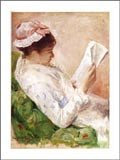 The Physick Book of Deliverance Dane - Katherine Howe
The Physick Book of Deliverance Dane - Katherine HoweMultiple timelines in a novel can be tricky. Each plot must be believable and developed on its own, and must mesh with and further the parallel narrative(s). A.S. Byatt's Possession and Marge Piercy's Woman on the Edge of Time are nearly perfect examples of how two intricate stories can weave one satisfying fabric.
Yes, reader: I do set high standards for literary gymnastics. The Physick Book of Deliverance Dane was a Barnes & Noble recommended selection, and I expected a lot. Since I have recommended the book to friends, you may infer that I enjoyed it and wanted my friends to enjoy it as well. True. Do not infer, however, that it meets the standards set by Byatt and Piercy. It does not.
The modern (1991) story in this novel introduces Connie Goodwin, a graduate student of early American history who is spending a summer cleaning out the house of her long-dead grandmother, and searching for a scholarly topic that will satisfy her advisor. The two projects meet and mesh when she discovers a small paper in a centuries-old Bible that bears the name "Deliverance Dane." Her curiosity about Deliverance leads her to propose the research as her project, and her advisor agrees.
In the late 17th century, Deliverance Dane lives in uneasy times as a wise woman and herbal healer whose potions and attention are sought after by the sick. She knows the danger of being accused as a witch if she should fail to heal one of her patients. When a child dies, she is accused, convicted, and hanged. Her daughter Mercy follows her mother's last wish: she escapes from the town, taking her mother's book of remedies and spells - the Physick Book - to continue the work of healing and comforting those in need.
Over the years, women descendants have less use for, or belief in, the magic and potions, as science and medicine replace the old ways. The book itself becomes a mere object to be cataloged amongst household effects. It is sold, and misplaced in some bureaucratic tangle.
The sights, smells, sounds, and aura of each dip into the past are both compelling and repugnant to the modern reader who is used to sanitized images of well-known events. We do not often see the horrific conditions of the imprisonment, where accused and convicted women were chained in deadly squalor. Howe shows us the truth without a single gratuitous moment, contrasting the evil of the good folk who used torture and death in the name of their religion - without mercy, without introspection, and without logic. Howe's scholarship is thorough, and woven into the plot with grace.
in the present, Connie's efforts to trace Deliverance in local church records and archives yield both facts and a new boyfriend, Sam, who works as a steeple jack, preserving local architecture. When Connie discovers the facts of Deliverance's death, and the possibility of the survival of the Physick book, she brings the information to her academic advisor. His excitement seems both disproportionate and strange, especially when he posits a question: "Have you not considered the distinct possibility that the accused were simply guilty of witchcraft?"
Connie is caught between what she has been trained to believe and this preposterous quesion. Can witchcraft and magic be true? Or, are they superstitions perpetrated by the ignorant and cruel? Her mother, Grace, always has believed in practical magic, and has practiced unscientific healing methods that have made Connie scoff. In addition, Connie has neither disclosed nor examined the physical shock she felt when she first touched the Bible, nor taken the mystical symbols that appeared on her grandmother's door seriously. Her advisor's demands and fixations become more troubling and vehement as her project progresses. How far from her dispassionate, scholarly path will she stray as she searches for the story, the book, and a solution to a mysterious and sudden crisis?
I think the author was wise to set Connie's story in 1991 rather than the present, where a few mouse clicks may have made Connie's legwork through the churches and archives unnecessary. The physical details of each building and record-keeper are vivid - more vivid than Connie herself. The old house she is cleaning has no electricity, so Connie illuminates the night with lanterns and candles. The advisor's odd behaviour conceals beliefs that are more strange than his apparent belief in the validity of the Salem verdicts. Sam is likeable, but pallid, Connie's dog is a loving companion (familiar?), and the reader is shown the academic and seaside beauty of Cambridge. Most of the present is convivial, almost cozy, in the way of some academic novels.
But - the two plotlines are not equal. The world of Deliverance and Mercy is vivid and compelling; Deliverance and Mercy are real characters whose emotions are true. Connie's story is - well - meh. It seems a contrivance to bracket the past. Her research, love affair, and demented advisor are pale and paltry compared to the life-and-death struggles caused by ignorance in the past. And -- if the author is going to use magical realism, it has to appear with more consistency, and less as deus ex machina. (I found myself thinking "more cowbell.")

Why, then, do I recommend this book to friends and all? Simple : it's fun to read. Just don't expect Byatt or Piercy.
Note: if you wish to learn about the persecution of witches from the view of the social, economic, historical, and feminist issues that doubtless underpinned the pious religious prattle, read Never Again the Burning Times by Loretta Orion.


